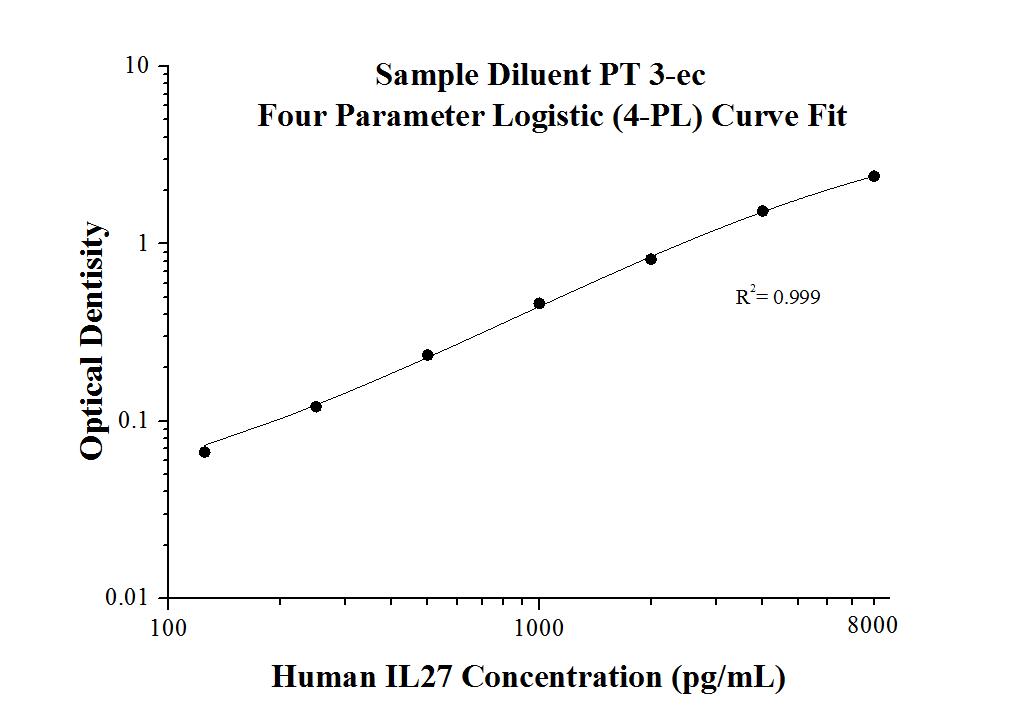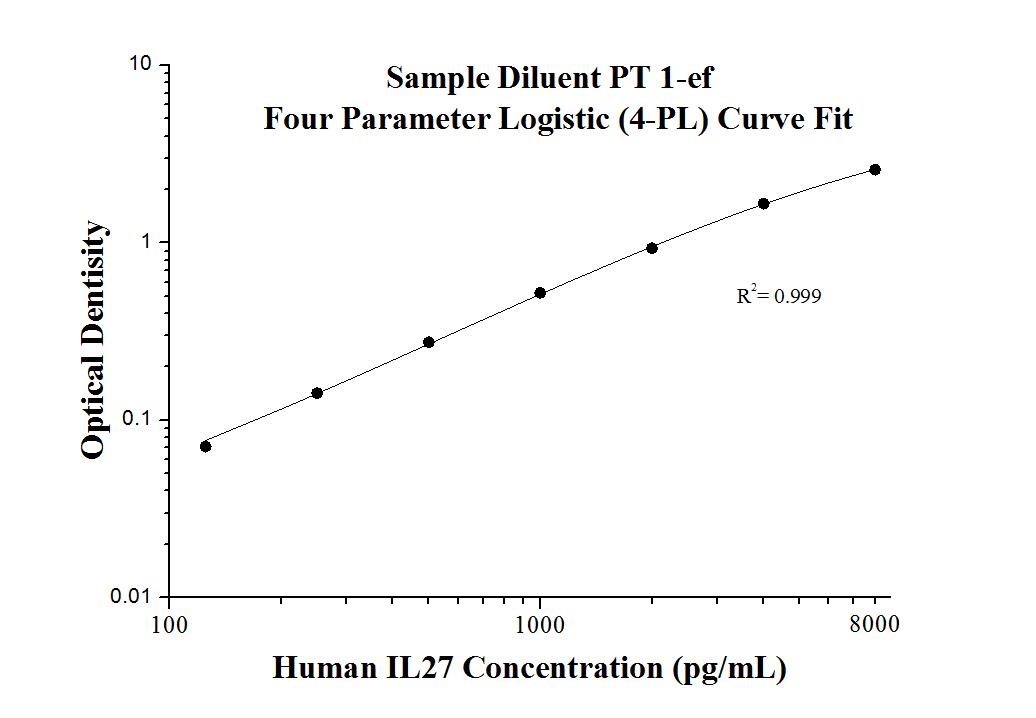Human IL-27 ELISA Kit
Cat no : KE00089
Synonyms
IL 27, IL 27 A, IL 27 subunit alpha, IL 27A, IL27, IL-27, IL27 A, IL27A, IL-27A, IL27p28, IL30, interleukin 27, Interleukin 27 subunit alpha, p28
Validation Data Gallery
Product Information
KE00089 is a solid phase sandwich Enzyme Linked-Immuno-Sorbent Assay (Sandwich ELISA). The human IL27 ELISA kit is to be used to detect and quantify protein levels of endogenous human IL27. The assay recognizes human IL27. An antibody specific for human IL27 has been pre-coated onto the microwells. The human IL27 protein in samples is captured by the coated antibody after incubation. Following extensive washing, another antibody of biotinylated specific for human IL27 is added to detect the captured human IL27 protein. For signal development, Streptavidin-HRP is added, followed by Tetramethyl-benzidine (TMB) reagent. Solution containing sulfuric acid is used to stop color development and the color intensity which is proportional to the quantity of bound protein is measurable at 450 nm with the correction wavelength set at 630 nm.
| Product name | Human IL-27 ELISA Kit |
| Tests | 1 X 96 well plate |
| Sample type | Serum, Plasma, Cell culture supernatants |
| Assay type | Sandwich |
| Sensitivity | 11.0 pg/mL |
| Range | 125 - 8000 pg/mL |
| Reactivity | Human |
| Tested applications | Sandwich ELISA |
| Gene ID (NCBI) | 246778 |
Recovery
| Sample Type | Average | Range |
|---|---|---|
| Human plasma | 86% | 70%-120% |
| Cell culture supernatants | 95% | 74%-117% |
IntraAssay
| Sample | n | mean ( pg/mL) | SD | CV% |
|---|---|---|---|---|
| 1 | 20 | 1,767.4 | 79.1 | 4.5 |
| 2 | 20 | 3,341.6 | 106.2 | 3.2 |
| 3 | 20 | 6,796.1 | 527.0 | 7.8 |
InterAssay
| Sample | n | mean ( pg/mL) | SD | CV% |
|---|---|---|---|---|
| 1 | 24 | 1,959.9 | 80.9 | 4.1 |
| 2 | 24 | 3,633.0 | 206.3 | 5.7 |
| 3 | 24 | 6,731.5 | 532.8 | 7.9 |
Background Information
IL-27, as a member of the IL-6/IL-12 family, is a heterodimeric cytokine composed of two subunits: p28 (IL-27a) and EBI3 (IL-27b). IL-27 acts on various cell types, including T cells, B cells, macrophages, dendritic cells, natural killer (NK) cells and non-hematopoietic cells. IL-27 plays a critical role in the early regulation of T helper type 1 initiation, and enhances proliferation of naive CD4+T cells and naive B cells. It, however, also exerts anti-inflammatory functions by inhibiting the development of Th17 cells and inducing IL-10 producing type 1 regulatory T cells. IL-27 is a potentially promising cytokine for therapeutic approaches on various human diseases.
Properties
| Storage Instructions | All the reagents are stored at 2-8℃ for 6 months or -20℃ for 12 months. Refer to the protocol for further storage instructions. |
| Synonyms | IL 27, IL 27 A, IL 27 subunit alpha, IL 27A, IL27, IL-27, IL27 A, IL27A, IL-27A, IL27p28, IL30, interleukin 27, Interleukin 27 subunit alpha, p28 |
Publications
| Species | Sample Type | Title |
|---|---|---|
J Cell Mol Med CD63 negatively regulates hepatocellular carcinoma development through suppression of inflammatory cytokine-induced STAT3 activation. |


